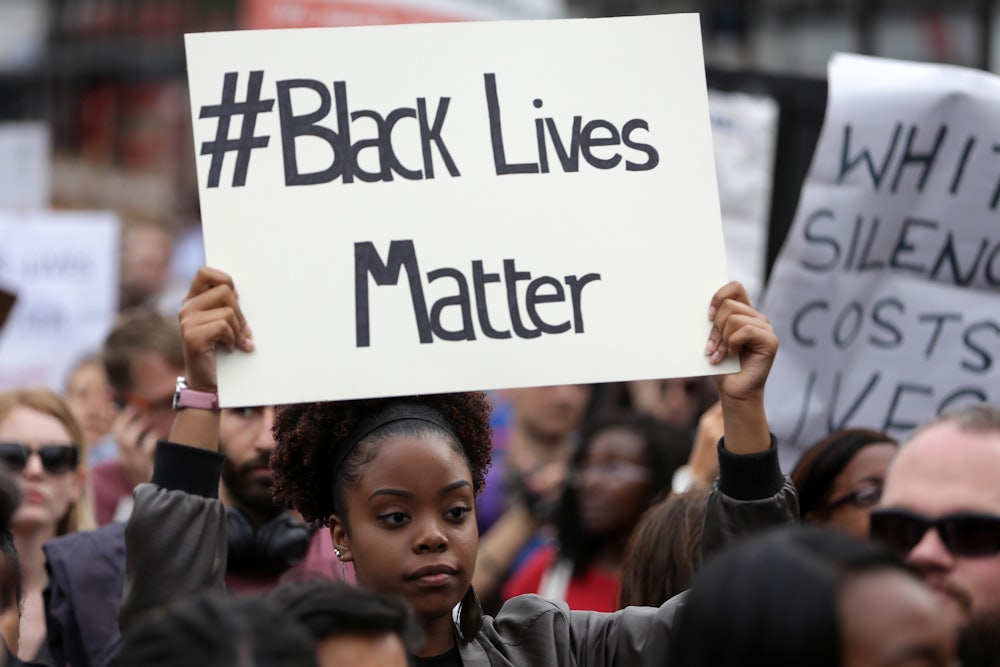Police killings of African-Americans on social media have become the visual hallmark of our time. This decade will be recalled through blurry cellphone and dash-cam videos of shootings. But how will it be remembered?
From my scholarship on visual culture, most recently on the visual tactics of political protest, it is clear that this marks a transition that I call the rise of the Jim Crow internet. It’s not all of the internet, of course, but a self-referential, wide-ranging and increasingly influential slice of it, from Breitbart to Blue Lives Matter and all over Twitter.
Visible on cable TV, Google searches, Twitter and other social media, the Jim Crow internet is challenging the way race in general—and police violence in particular—are understood, pushing back against the gains made by Black Lives Matter.
Who wins this struggle over cultural and political meaning may determine our political future.
Cameras don’t stop violence
Because there is a political and cultural divide as to how we see and what we make of it, cameras in themselves solve nothing.
Terence Crutcher, 40, was shot in Tulsa, Oklahoma on Sept. 19. In the official account, Police Officer Betty Shelby describes getting scared when he “locks his eyes on her.” Under Jim Crow, the allegation of “reckless eyeballing” meant any look from a black person at a white person, especially a woman. It was used to justify deadly force.
Looking a police officer in the eye also got Freddie Gray into trouble in Baltimore, leading to his still unexplained death in a police van.
The dash-cam video in Crutcher’s case suggests that the windows of his car were closed. The indicted shooter claims they were open, causing her to fear that he was reaching for a weapon. Her case depends on how we interpret what she thought she saw, against what the video shows.
Video is just data
Lawyers representing police officers have learned how to handle video footage to exploit these different interpretations and present their clients in the best possible light.
In the 1992 trial of Rodney King, accused of abusing drugs as Crutcher has been, defense lawyers slowed down the video of his beating to make it seem as if he was responsible. More recently, when Tamir Rice was killed in Cleveland, prosecutors edited the few seconds of video into hundreds of stills to make his movements seem more dramatic than they appeared when played at normal speed, as if he was reaching for a gun.
Video is data, not truth. It can be presented in any number of ways.
The second case of police shooting demanding attention this week is that of Keith Scott in Charlotte, North Carolina. A dash-cam video exists but the police are not releasing it. Police Chief Kerr Putney admits
“the video does not give me absolute, definitive, visual evidence that would confirm that a person is pointing a gun.” He nonetheless claims that witness accounts and physical evidence will do so. Putney’s statements seem to imply that video only counts when it shows what you want it to show.
The cumulative effect of over 25 years of official skepticism of video evidence since the Rodney King case is to undermine what is seen in favor of what is said by police and other people in power.
The Jim Crow internet
Online, images originally circulated as evidence of police brutality are seen by others as depictions of African-American violence and pathology. In short, the internet has created its own form of the New Jim Crow, to adapt the phrase coined by writer Michele Alexander.
This section of the internet has created its own meanings for the notorious videos of police violence. The third result on Google for “Alton Sterling video” sends you to the website Blue Lives Matter. It claims to “vindicate cops” in the shooting.
Character demolition goes hand-in-hand with this new video analysis. Conspiracy theorist Mark Dice appears close to the top of Google searches for Keith Scott. Presented as a “media analyst,” he denounced the “black thugs who are rioting over this black thug.”
Terence Crutcher is being accused online of using drugs when he was shot. The “evidence” is a previous conviction and an unconfirmed allegation of drugs found in his vehicle. A frame-by-frame breakdown of the helicopter video of Crutcher claims to demonstrate that he was not shot with his hands up. Less than three seconds of video are broken into seven stills that appear to support the idea that he’s reaching for a gun. But the moment of the shooting itself was not recorded, so we do not know exactly where his hands were the instant he was shot.
The Jim Crow internet is now viral
The paranoid patterns of association used by the extreme right online are entering the mainstream. Yesterday, Rep. Tim Huelskamp, Republican of Kansas, called North Carolina protesters “hoodlums” on Twitter. On the BBC, Rep. Robert Pittenger, Republican of North Carolina, claimed “they hate white people because white people are successful and they’re not.”
When Hillary Clinton tweeted that the the shooting was “unbearable,” CNN at once gave a platform to the race-baiting ex-NYPD cop Harry Houck, who denounced Clinton on Twitter for “playing [the] race card for black votes.” This tweet garnered a mere four likes and four retweets and yet was covered on a supposedly respectable news channel.
Some media corporations are only too happy to host this kind of analysis, despite the alt-right calling them #LyingPress and worse. The Trump campaign is led by Stephen Bannon, an executive from Breibart News, who describes it as “the platform for the alt-right.”
While the media concentrate on Monday’s ceremonial presidential debate, it’s this online debate that will in the end matter most.
![]()
This article was originally published on The Conversation. Read the original article.
